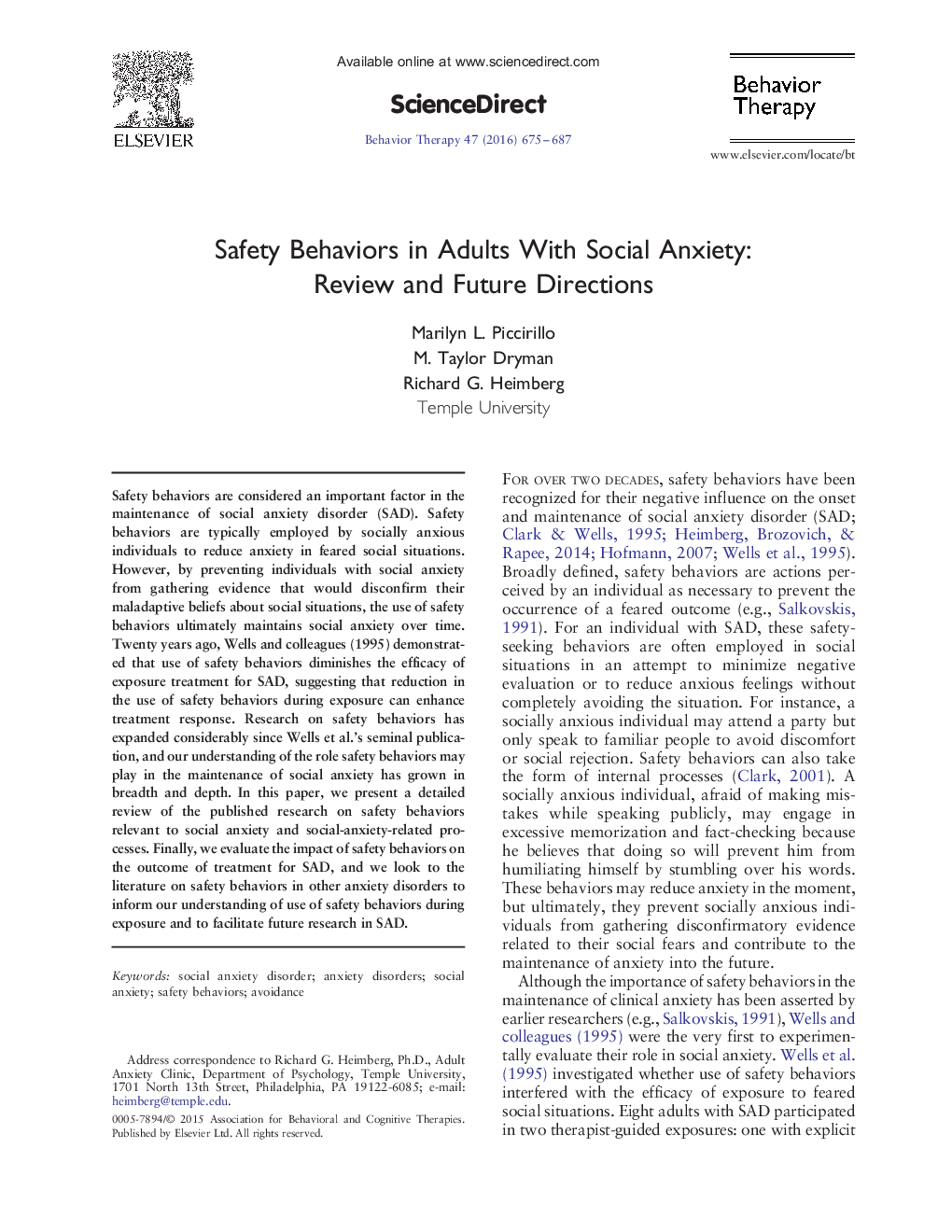| کد مقاله | کد نشریه | سال انتشار | مقاله انگلیسی | نسخه تمام متن |
|---|---|---|---|---|
| 5038048 | 1370246 | 2016 | 13 صفحه PDF | دانلود رایگان |
- Safety behaviors (SBs) are actions deemed necessary to prevent a feared outcome.
- SBs and related processes may maintain social anxiety disorder (SAD).
- SBs negatively affect social performance and interactions for individuals with SAD.
- Reduction of SB use during exposures results in greater symptom reduction for SAD.
- Judicious use of SBs during early exposures may make SAD treatment more tolerable.
Safety behaviors are considered an important factor in the maintenance of social anxiety disorder (SAD). Safety behaviors are typically employed by socially anxious individuals to reduce anxiety in feared social situations. However, by preventing individuals with social anxiety from gathering evidence that would disconfirm their maladaptive beliefs about social situations, the use of safety behaviors ultimately maintains social anxiety over time. Twenty years ago, Wells and colleagues (1995) demonstrated that use of safety behaviors diminishes the efficacy of exposure treatment for SAD, suggesting that reduction in the use of safety behaviors during exposure can enhance treatment response. Research on safety behaviors has expanded considerably since Wells et al.'s seminal publication, and our understanding of the role safety behaviors may play in the maintenance of social anxiety has grown in breadth and depth. In this paper, we present a detailed review of the published research on safety behaviors relevant to social anxiety and social-anxiety-related processes. Finally, we evaluate the impact of safety behaviors on the outcome of treatment for SAD, and we look to the literature on safety behaviors in other anxiety disorders to inform our understanding of use of safety behaviors during exposure and to facilitate future research in SAD.
Journal: Behavior Therapy - Volume 47, Issue 5, September 2016, Pages 675-687
